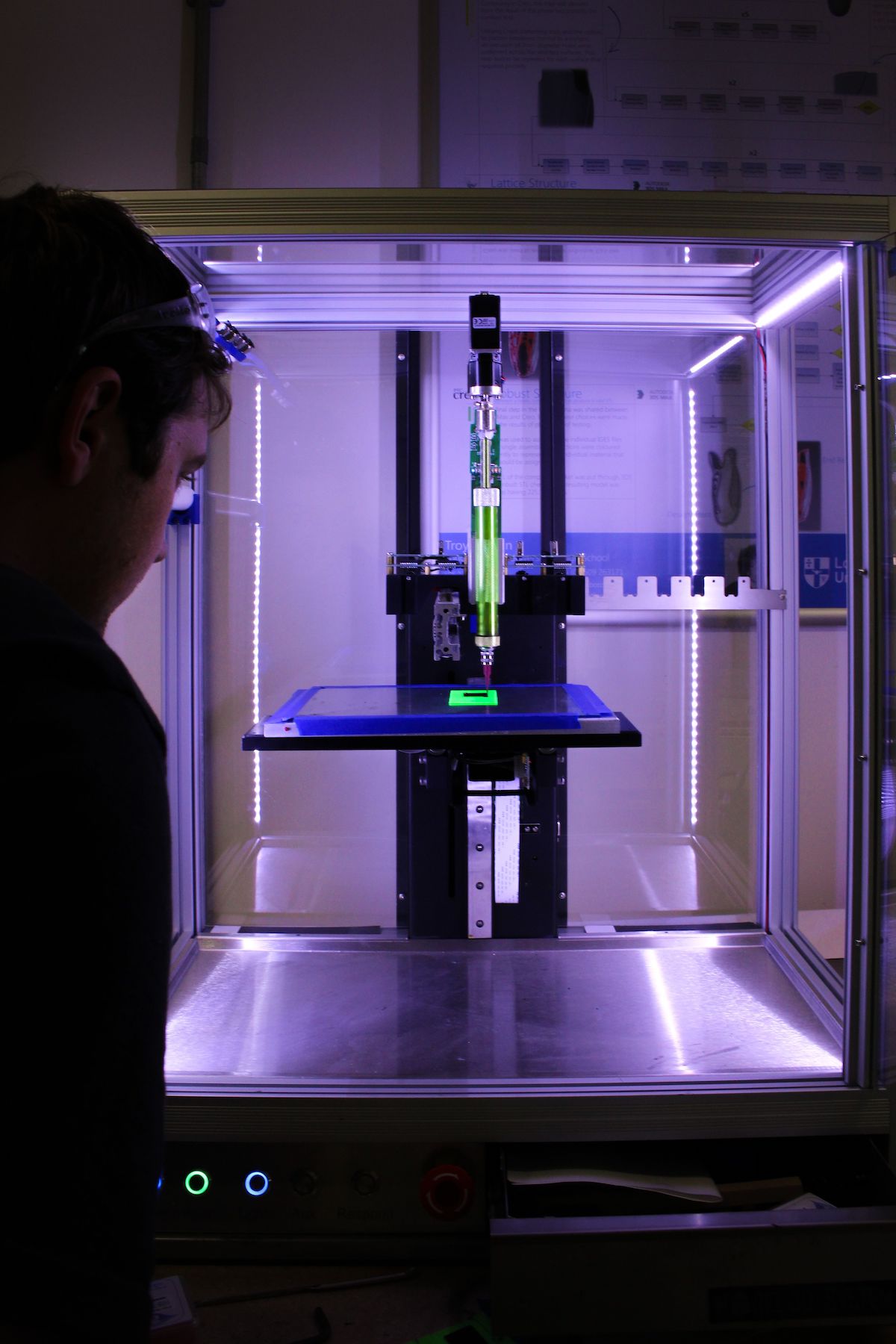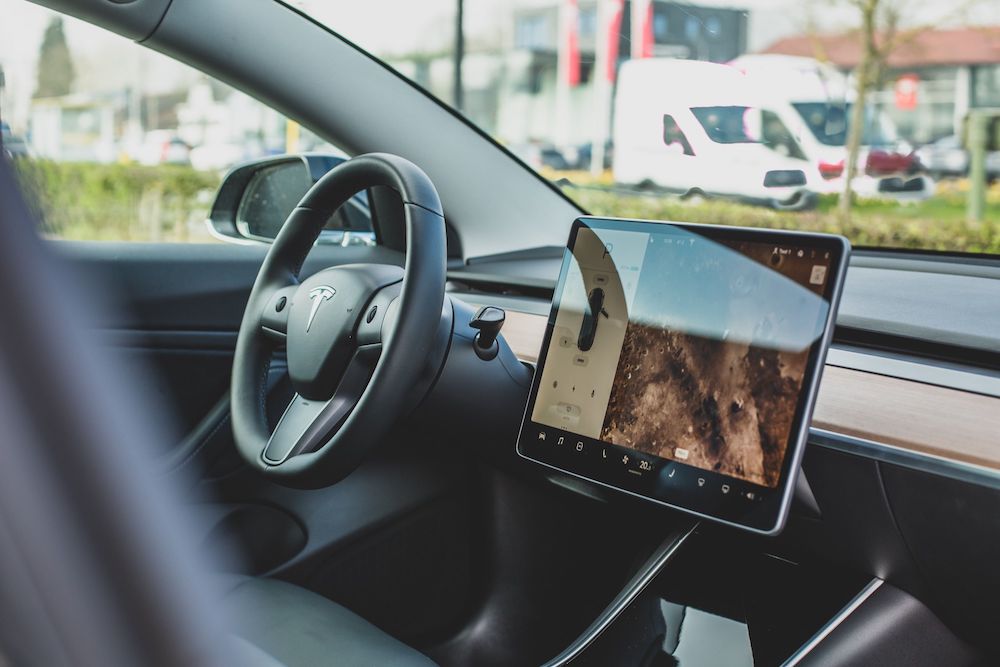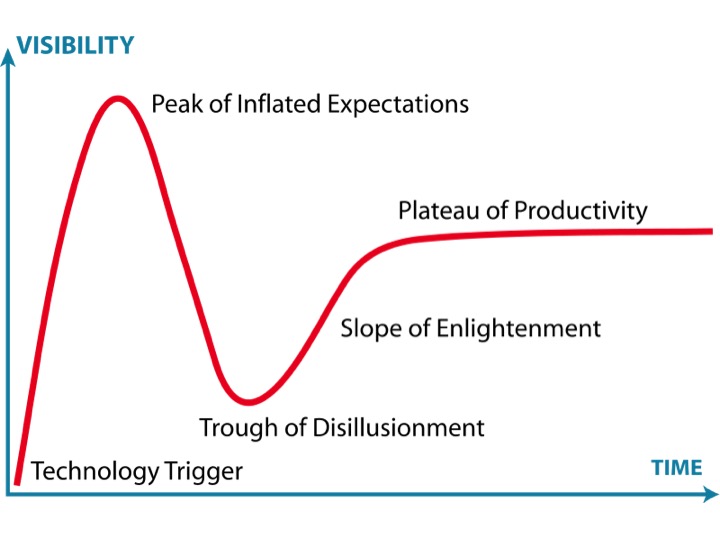
Nice to meet you, everyone. My name is Nishide, Philippines manager of Sun*inc.
We resonate with Kredo’s vision of “creating value for the world and contributing to humanity through IT and education.” Runs Ruby on Rails Study Abroad as a joint course.
This time, I would like to contribute to provide readers with an opportunity to learn more about “the present and future of technology”.
In this first installment, I would like to introduce a method for predicting the future of 5 to 10 years under the title of “How to predict the future of IT technology.”
Table of Content
- What is the Gartner Hype Cycle?
- What kind of IT technology will change the world in the next 10 years?
- What is the future to think about from the hype cycle?
- 4D printers and the future of biotechnology
- Autonomous Driving (Level 4/5) – The future of self-driving cars
- To further enhance the image of the future
What is the Gartner Hype Cycle?
As we foresee the future, I would like to refer to the concept of the Gartner Hype Cycle.
The “Hype Cycle” is a diagram that expresses the cycle of how a particular technology or technology is expected in society and adopted at a practical level in chronological order.
It is a concept advocated by the world-renowned research and consulting group Gartner.
The Hype Cycle is said to have five stages:
- Dawn of technology – stage of technology development
- Fashion period – the time when it is recognized by the public and becomes a topic (the time when “excessive expectations” are placed)
- A period of disillusionment – a period when excessive expectations are settled once, and a more realistic method of social use is being explored
- Recovery period – a period when realistic social use gradually begins to take root
- Stable period – A period in which social use progresses stably, and further advances toward applied use
This concept of “hype cycle” has become a widely accepted concept, and it is often applied to trends in programming languages.
For this reason, it is a very useful index for understanding the rise and fall of IT technology and technology.
What kind of IT technology will change the world in the next 10 years?
Take, for example, the 2018 Hype Cycle of Emerging Technologies.
When the “Hype Cycle of Advanced Technologies” was announced last year, it was said that “Blockchain has finally entered a period of disillusionment = from the time when it was being talked about as a topic to the time when more realistic usage methods are properly trial and error. It was a hot topic.
While the rise of cryptocurrencies as a speculative bubble is waning, individual fundraising and fan club services that feel the potential of blockchains such as finance have been released, and it seems more realistic. It feels like trial and error is increasing.
In addition, this year’s hype cycle of advanced technology is as described above, and 5G, the next-generation network that is being introduced in the United States and South Korea, is reaching the peak of its popularity.
However, in a world where 5G has become commonplace, it can be said that we are in a phase where various social experiments will proceed in the future regarding “what specific services are possible”.
For that reason, we are still in the “period of dancing with 5G as a language”, so we are in the “fashionable period” where “excessive expectations” are at their peak.
On the other hand, it also means that there are wide opportunities for us in “5G-related technologies and services.”
Also, with the announcement of the Oculus Quest in the first half of this year, more interactive and cheaper VR equipment was announced, and the possibility that VR will have a greater impact on our daily lives is beginning to emerge.
These VR technologies are referred to as the “dawn” of the topic of “immersive work environments” called “immersive workspaces.”
In fact, in 2018, the story that a company called eXp Realty in the United States had already started “VR Commencement” had already become a hot topic.
However, Gartner believes that these technologies are still some way off (albeit within 5-10 years).
What is the future to think about from the hype cycle?
However, just looking at the hype cycle as above, I think it is difficult to imagine what kind of impact it will have on us, when it will happen, and when.
Therefore, I would like to introduce what kind of future we can imagine while looking at some of the technology trends in the Hype Cycle.
4D printers and the future of biotechnology

Let’s take a look at the 2018 hype cycle. “4D printer” and “biotechnology” are lined up at the dawn.
I feel that the combination of the two will have a rather disruptive impact on the future of medicine.
A 4D printer is a 3D printer that can print moving 3D objects.
By embedding a program into the object to be printed and printing, it is possible to print “3D object in motion = 3D object with a time axis”.
At the research level, it is already possible to print 3D objects using “cells and organic compounds” as materials, so 3D printing of “printing organs” is now becoming a realistic possibility.
On the other hand, even within “biotechnology,” if we combine the field of genetic engineering called “gene editing” with “iPS cells,” we can expect a future in which we can realize even more valuable “artificial biological tissues.”.
Recent “genetic engineering” and “gene editing” technologies have made it possible to edit genes as desired with considerable accuracy through a technology called “CRISPR”.
By combining this “gene editing” technology with research on pluripotent cells called iPS cells, it is possible to “create replicated biological parts based on one’s genetic information.”
In fact, at Kyoto University’s iPS Cell Research Institute, research is being conducted on “methods for treating muscle cells of muscular dystrophy patients by combining gene editing”.
It is not hard to imagine that a revolutionary change in surgical medicine will occur if we combine these “4D printers” and “artificial body tissues that utilize biotechnology centered on gene editing technology .”
For organ transplantation, cancer, HIV, etc., we will prepare organs, living tissues, and therapeutic drugs that have undergone personalized gene editing based on our genes, and present fundamental solutions.
A future where such a future can already be realized technically is approaching in 10 or 20 years.
Autonomous Driving (Level 4/5) – The future of self-driving cars

Now let’s take a look at the 2019 hype cycle.
Although it is written in a yellow triangle that “10 years or more is required”, there are descriptions of “automatic driving (level 4)” and “automatic driving (level 5)”.
These are talking about self-driving cars that will be realized as an extension of AI technology. It is foreseen that it will take more time to implement it in society.
In the first place, even though “autonomous driving” has become a hot topic, there are probably few people who know that there are levels such as “level 4” and “level 5” for autonomous driving technology. ?
Level 4 is an automated driving technology that realizes fully automated driving under specific conditions while also automating emergency response, while Level 5 is a technology that achieves fully automated driving with no restrictions.
Autonomous vehicles that many automakers are currently aiming to commercialize are Level 3, a phase in which autonomous driving is realized in limited conditions such as expressways, and emergency response is performed by humans. has become common.
Also, what Elon Musk envisions as Tesla’s business concept is, “The owner of a level 5 fully automated car can automatically drive an Uber driver when the car is not in the car. It is a world where you can earn 30,000 dollars a year without permission by carrying passengers as a passenger.
In the future, after buying a Tesla, we can secure an annual income of 3 million yen just by sleeping at home. In the future of autonomous driving technology, there is such a future possibility.
In this way, just by knowing that there are various technical stage definitions for “autonomous driving” and “autonomous driving” technology, you can gain a deeper understanding of autonomous driving / automated driving technology.
Also, by knowing Elon Musk’s vision for autonomous driving, you will be able to have a more concrete image of how our lives will change in a world where there are fully automated cars.
In particular, Elon Musk’s vision for the future of Tesla is an example of a private company presenting a concrete method of “realizing a basic income by utilizing technology,” and the use of AI and robots “takes away jobs.” It can be said that it is an amazing future concept that shows the possibility of “providing freedom to people” instead of
To further enhance the image of the future

I believe that it is valuable for many people to be able to think deeply about their own lives while imagining the possibilities of the future.
The reason for this is that the more insight we have into the future, the better we can come up with a better plan for life, asking where in the world and what kind of things we will enjoy doing. It’s from
The imagination of the future that I introduced this time may have had sci-fi stories that are difficult to imagine if we are just living our daily lives.
However, the development of technology in the first half of the 21st century has the overwhelming destructive power of “realizing science fiction” in all areas.

